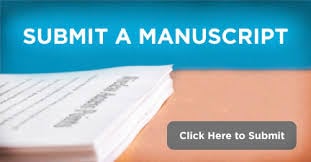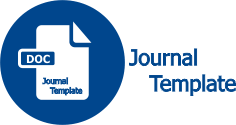Model Usabilitas Aplikasi Bergerak Untuk Dakwah
Abstract
Dakwah adalah bagian penting dalam kehidupan beragama. Metode dakwah berkembang dan bertransformasi selaras dengan kemajuan teknologi informasi. Dakwah melalui media aplikasi juga banyak digunakan. Untuk mengoptimalkan kemanfaatan aplikasi dakwah ini diperlukan model usabilitas aplikasi bergerak untuk bidang dakwah. Beragam studi berkaitan usabilitas untuk berbagai bidang aplikasi telah dilakukan oleh banyak peneliti. Namun, usabilitas untuk aplikasi bergerak bidang dakwah sangat jarang yang membahasnya. Pada paper ini, diusulkan usabilitas aplikasi bergerak untuk dakwah. Diantara aspek yang diusulkan untuk meningkatkan usabilitas aplikasi bergerak bidang dakwah adalah (1) Terdapat dalil/referensi yang akurat (2) mudah digunakan (3) efektif (4) efisien (5) konsisten (6) fokus pada topik tertentu (7) bahasa sesuai dengan usia (8) komponen aplikasi mudah diingat dan (9) menggunakan nasyid untuk mengurangi kebosanan. Model ini bertujuan untuk meningkatan kepuasan pengguna, efektif dan aplikasi dakwah dapat dipertanggungjawabkan berlandaskan referensi yang akurat.
Keywords
Full Text:
PDFReferences
M. Sobri, M. T. Ijab, and N. M. Nayan, “The Usability Factors of Cardiovascular Health Monitoring Mobile Application : A Conceptual Model,” Digit. Transform. Landsc. Fourth Ind. Revolut. Era, pp. 80–90, 2018.
S. L. Beck et al., “Feasibility and Usability of EnergyPoints: A Mobile Health App to Guide Acupressure Use for Cancer Symptom Management,” Integr. Cancer Ther., vol. 23, Jan. 2024, doi: 10.1177/15347354231223965.
P. Bickmann, I. Froböse, and C. Grieben, “An mHealth Application in German Health Care System: Importance of User Participation in the Development Process,” J. Med. Syst., vol. 48, no. 1, p. 20, Feb. 2024, doi: 10.1007/s10916-024-02042-6.
R. Kay and S. Lauricella, “Exploring the Use of Mathematics Apps for Elementary School Students,” Proc. EdMedia World Conf. Educ. Media Technol., no. November, pp. 206–211, 2018, [Online]. Available: https://www.explorelearning.com.
F. D. Deris and N. S. A. Shukor, “Vocabulary learning through mobile apps: A phenomenological inquiry of student acceptance and desired apps features,” Int. J. Interact. Mob. Technol., vol. 13, no. 7, pp. 129–140, 2019, doi: 10.3991/ijim.v13i07.10845.
F. Sudirjo, D. M. Ratna Tungga Dewa, L. Indra Kesuma, L. Suryaningsih, and E. Yuniarti Utami, “Application of The User Centered Design Method To Evaluate The Relationship Between User Experience, User Interface and Customer Satisfaction on Banking Mobile Application,” J. Inf. dan Teknol., vol. 6, pp. 7–13, Jan. 2024, doi: 10.60083/jidt.v6i1.465.
A. Zain, M. Fuadi, and Maimun, “Identifikasi Ayat-Ayat Dakwah,” Al-Idarah J. Manaj. Dan Adm. Islam, vol. 1, no. 2, pp. 167–188, 2017.
R. Harrison, D. Flood, and D. Duce, “Usability of mobile applications: literature review and rationale for a new usability model,” J. Interact. Sci., vol. 1, no. 1, p. 1, 2013, doi: 10.1186/2194-0827-1-1.
P. Weichbroth, “Usability of mobile applications: A systematic literature study,” IEEE Access, vol. 8, pp. 55563–55577, 2020, doi: 10.1109/ACCESS.2020.2981892.
D. Gupta and A. K. Ahlawat, “Usability Determination Using Multistage Fuzzy System,” Phys. Procedia, vol. 78, pp. 263–270, 2016, doi: 10.1016/j.procs.2016.02.042.
M. Sobri, M. T. Ijab, and N. M. Nayan, “Systematic Literature Review untuk Membuat Model Aplikasi Pemantauan Kesehatan Cardiovascular,” J. RESTI (Rekayasa Sist. dan Teknol. Informasi), vol. 2, no. 2, pp. 458–464, 2018, doi: 10.29207/resti.v2i2.428.
K. Hamid et al., “Usability evaluation View project Usability Evaluation of Mobile Banking Applications in Digital Business as Emerging Economy,” IJCSNS Int. J. Comput. Sci. Netw. Secur., vol. 22, no. 2, p. 250, 2022, doi: 10.22937/IJCSNS.2022.22.2.32.
B. A. Kumar and P. Mohite, “Usability guideline for mobile learning apps: An empirical study,” Int. J. Mob. Learn. Organ., vol. 10, no. 4, pp. 223–237, 2016, doi: 10.1504/IJMLO.2016.079499.
O. E. Molina, D. R. Fuentes-Cancell, and A. García-Hernández, “Evaluating usability in educational technology: A systematic review from the teaching of mathematics,” Lumat, vol. 10, no. 1, pp. 65–88, 2022, doi: 10.31129/LUMAT.10.1.1686.
K. Ishaq, F. Rosdi, N. A. M. Zin, and A. Abid, “Usability and design issues of mobile assisted language learning application,” Int. J. Adv. Comput. Sci. Appl., vol. 11, no. 6, pp. 86–94, 2020, doi: 10.14569/IJACSA.2020.0110611.
DOI: http://dx.doi.org/10.22441/fifo.2023.v15i1.009
Refbacks
- There are currently no refbacks.
Jurnal Ilmiah FIFO
Fakultas Ilmu Komputer Universitas Mercu Buana
Jl. Raya Meruya Selatan, Kembangan, Jakarta 11650
Tlp./Fax: +62215871335
p-ISSN: 2085-4315
e-ISSN: 2502-8332
http://publikasi.mercubuana.ac.id/index.php/fifo
e-mail:[email protected]

This work is licensed under a Creative Commons Attribution-NonCommercial 4.0 International License.













